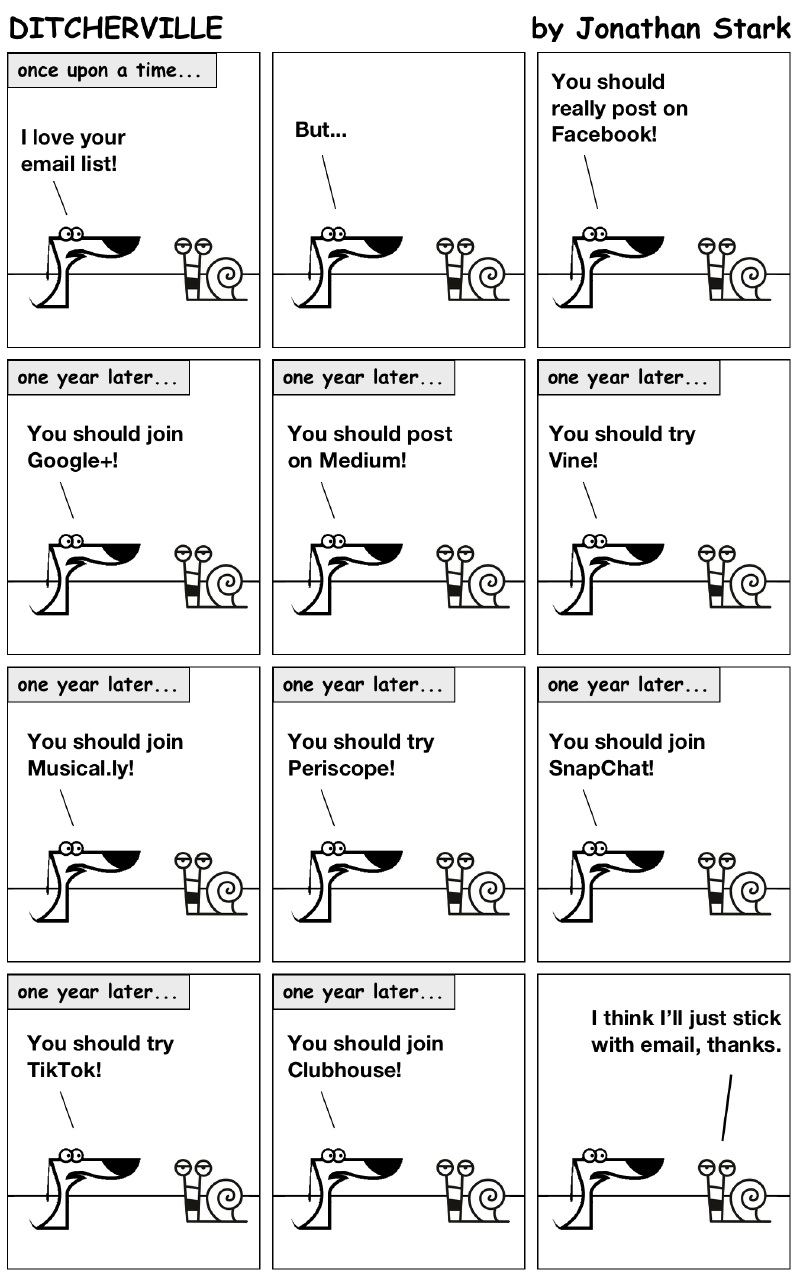I published my first post on this website almost ten years ago. My motivation was modest: Publicly link to useful stuff I wrote. Recently, I tidied up my homepage and added short descriptions to old posts, which made me reflect on how this website has changed over the years: From a quiet place for sharing some tips and progress reports, through B-list data science “influencing”, and back to a quiet place. This post summarises some of my reflections, in no particular order.
Views are addictive and never enough. The first time a post I published had over a thousand views, I was excited. Then some of my posts had over ten thousand views, so a mere thousand became a disappointment. I didn’t intentionally optimise for views – it happened because I wrote on popular topics, and distributed my posts through channels that worked at the time. If I had chosen to optimise for popularity, I probably would have grown dissatisfied with view counts in the tens of thousands, and then with hundreds of thousands, and then with millions. Instead, I went backwards in terms of popularity and audience size: I deleted my Twitter account a few years ago because I found the platform unpleasant, and I lost half my followers when I migrated my site from WordPress.com to Hugo two years ago (I couldn’t port non-email followers who were using the proprietary WordPress.com Reader). More importantly, I often write about topics that may be of low appeal to current followers, and don’t invest much effort in getting the word out. I don’t even bother with accurate long-term tracking of views and interactions – I only use Cloudflare Analytics to validate that the website is still working.
Meaningful engagement is more satisfying than views and likes. I removed the Like functionality when I got my website off WordPress.com. I don’t miss it, as likes have the same addictive “never enough” qualities as views. That said, views and likes are correlated with the amount of more satisfying engagement, which comes in the form of thoughtful comments and private messages. By reducing my distribution efforts, I have also reduced the amount of meaningful engagement, but such is life. I still have other motivators.
Writing publicly helps me think. Even with a low number of views, the fact that practically anyone in the world can read something I wrote makes me take it more seriously. I put more effort into making myself clear and checking references than if I were to write for myself. In addition, the process of writing often becomes a process of discovery – as I write things down and add structure to a post, my subject becomes clearer to me.
Writing publicly creates valuable documentation. Even if no one is reading right now, posts on this website remain accessible for years. I often link to my own writing – not (always) out of vanity, but because it’s relevant in a specific context. Recently, I started experimenting with easier-to-produce posts that I share under a today I learned (TIL) section – a format I learned about from following Simon Willison. So far, my TIL section is pretty much documentation for myself, as I put no effort into telling people about specific TIL posts. We’ll see how it goes in the long run.
Platform independence is awesome (if you have the right skills). Getting my website off WordPress.com a couple of years ago was a bit of a pain, but I love the extra control it gives me. On a platform like WordPress.com, I would have had to pay extra to do something like give all my posts short meta-descriptions and organise them on a single page, as I did recently. The same goes for setting up the TIL section, which was a breeze with Hugo. Being able to have fine-grained control over the rendered content and its structure works well for me, but it’s not for everyone (there’s a reason why a large portion of the web uses WordPress). Still, it has never been easier and cheaper to self-host a static site like mine.
Durable tech works well for quiet writing. Legacy technologies tend to get a bad rap. Many people prefer building with shiny new tech on shiny new platforms. Publishing on the web is no exception, as trendy ways of sharing content come and go. Twenty years ago, most of today’s social media didn’t exist. How much of it will exist in twenty years? Making any prediction is hard, but I’m willing to bet that twenty years from now, there will still be tools that can serve and render my website (the HTML / CSS / JS output of Hugo), as it exists right now. I wouldn’t make the same bet on nascent social media platforms or on writing-centric platforms such as Substack. This is in line with the Lindy effect, which states that “the future life expectancy of some non-perishable things, like a technology or an idea, is proportional to their current age”. It often makes perfect sense to go for new tech, as it comes with new capabilities. I prefer to be cautious, as I want to focus on what I get out of writing rather than on bouncing between platforms and tools.

Source: Ditcherville: I love your email list! CC BY-NC 4.0 by Jonathan Stark

Public comments are closed, but I love hearing from readers. Feel free to contact me with your thoughts.